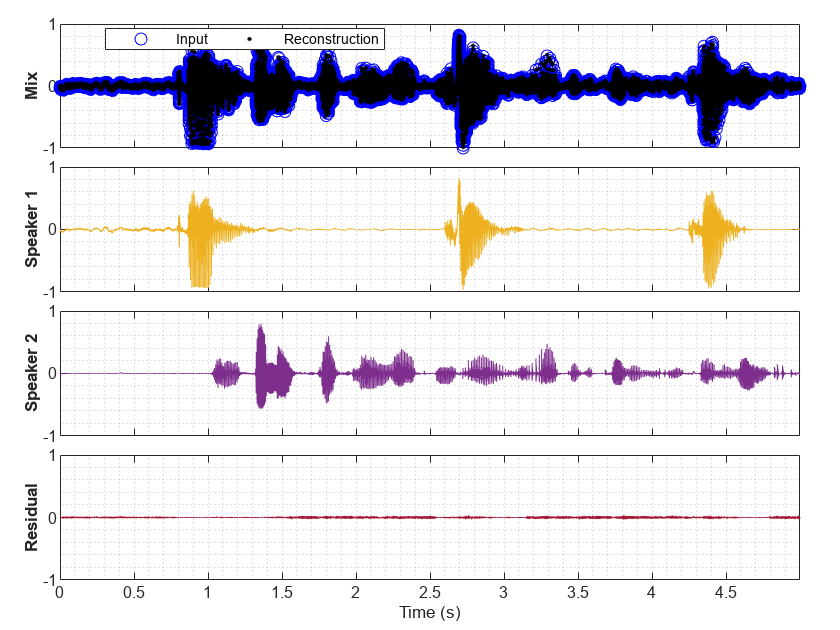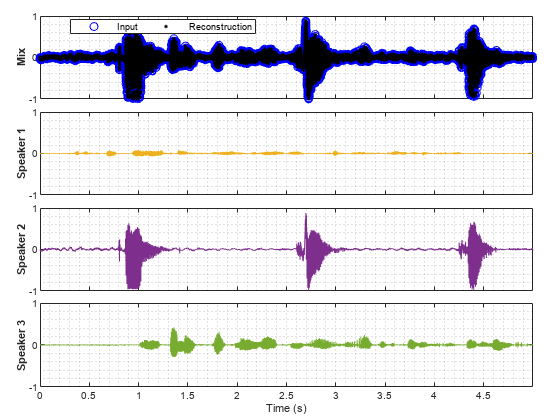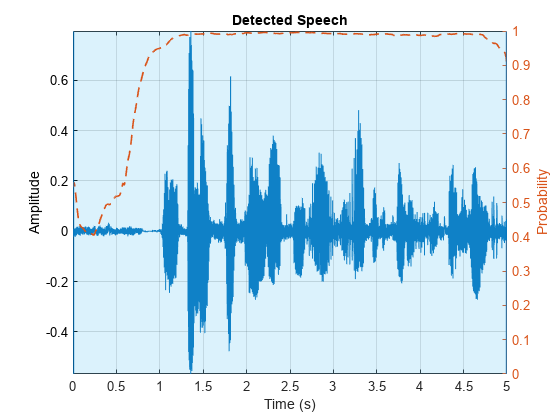separateSpeakers
Syntax
Description
y = separateSpeakers(audioIn,fs,Name=Value)separateSpeakers(audioIn,fs,NumSpeakers=3) separates a speech signal
that is known to contain three speakers.
[
also returns the residual signal after performing iterative speaker separation. Use this
syntax in combination with any of the input arguments in previous syntaxes. This syntax does
not apply if y,r] = separateSpeakers(___)NumSpeakers is 2 or
3.
separateSpeakers(___) with no output arguments plots
the input signal and the separated speaker signals. This function also plots the residual
signal if NumSpeakers is unspecified or set to
1.
Examples
Input Arguments
Name-Value Arguments
Output Arguments
Algorithms
References
[1] Luo, Yi, and Nima Mesgarani. “Conv-TasNet: Surpassing Ideal Time–Frequency Magnitude Masking for Speech Separation.” IEEE/ACM Transactions on Audio, Speech, and Language Processing, vol. 27, no. 8, Aug. 2019, pp. 1256–66. DOI.org (Crossref), https://doi.org/10.1109/TASLP.2019.2915167.
[2] Ravanelli, Mirco, et al. SpeechBrain: A General-Purpose Speech Toolkit. arXiv, 8 June 2021. arXiv.org, http://arxiv.org/abs/2106.04624
[3] Subakan, Cem, et al. “Attention Is All You Need In Speech Separation.” ICASSP 2021 - 2021 IEEE International Conference on Acoustics, Speech and Signal Processing (ICASSP), IEEE, 2021, pp. 21–25. DOI.org (Crossref), https://doi.org/10.1109/ICASSP39728.2021.9413901.
[4] Takahashi, Naoya, et al. “Recursive Speech Separation for Unknown Number of Speakers.” Interspeech 2019, ISCA, 2019, pp. 1348–52. DOI.org (Crossref), https://doi.org/10.21437/Interspeech.2019-1550.
Extended Capabilities
Version History
Introduced in R2023b




